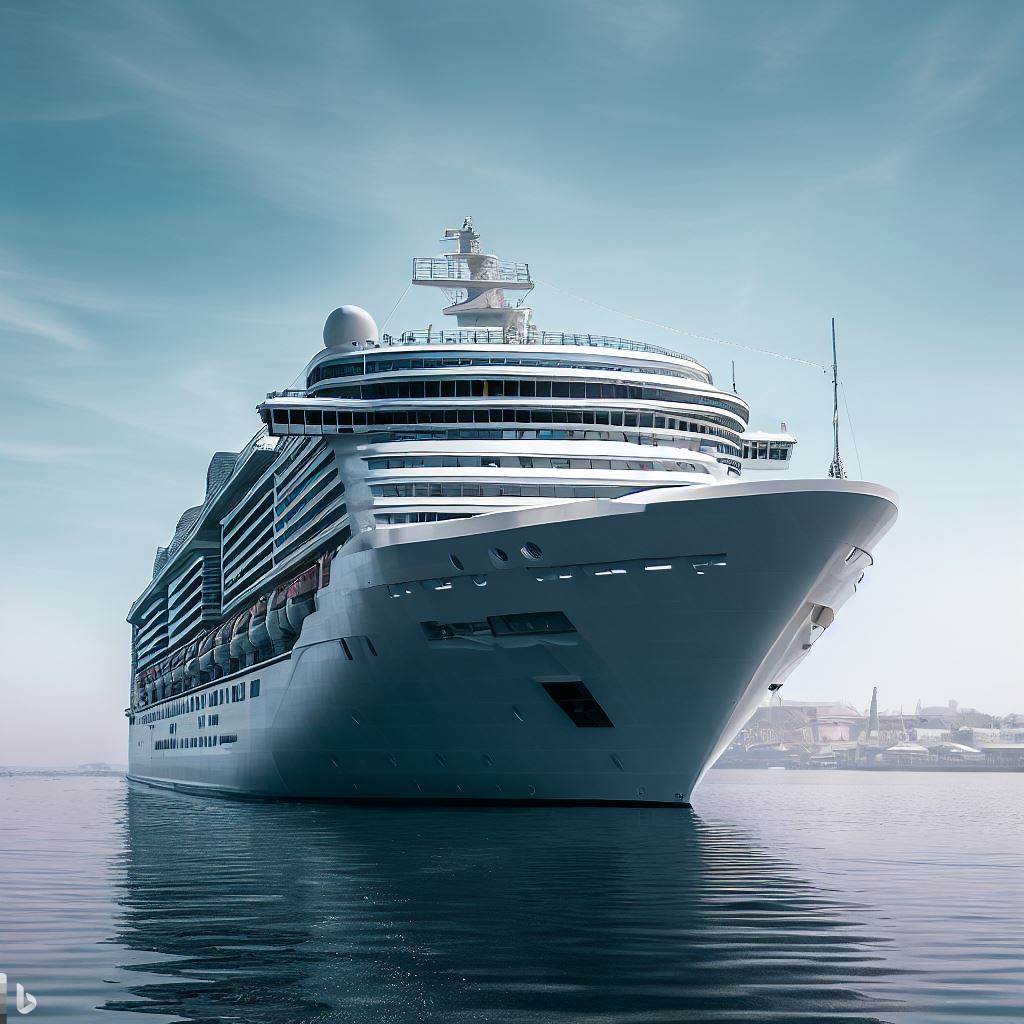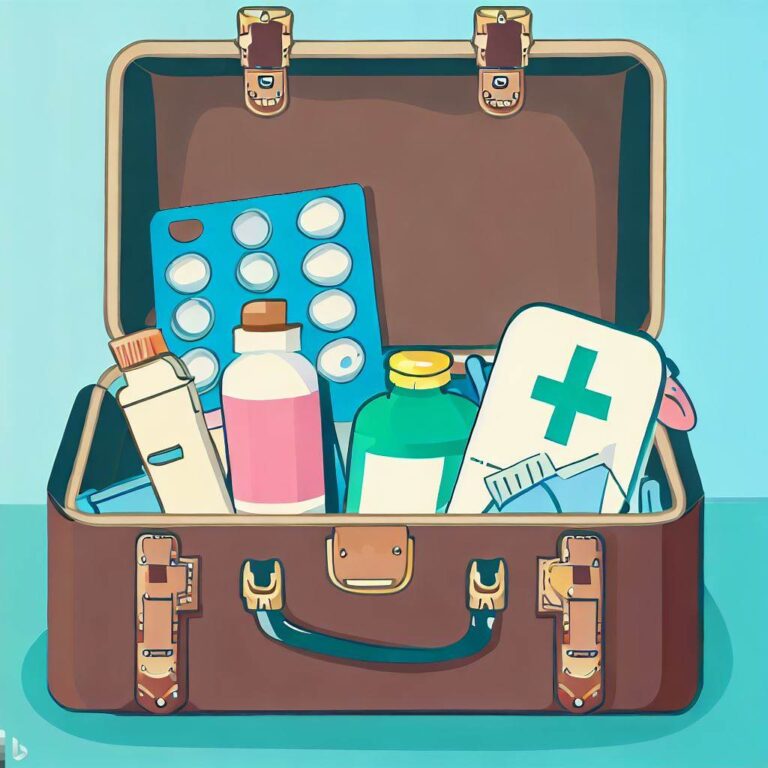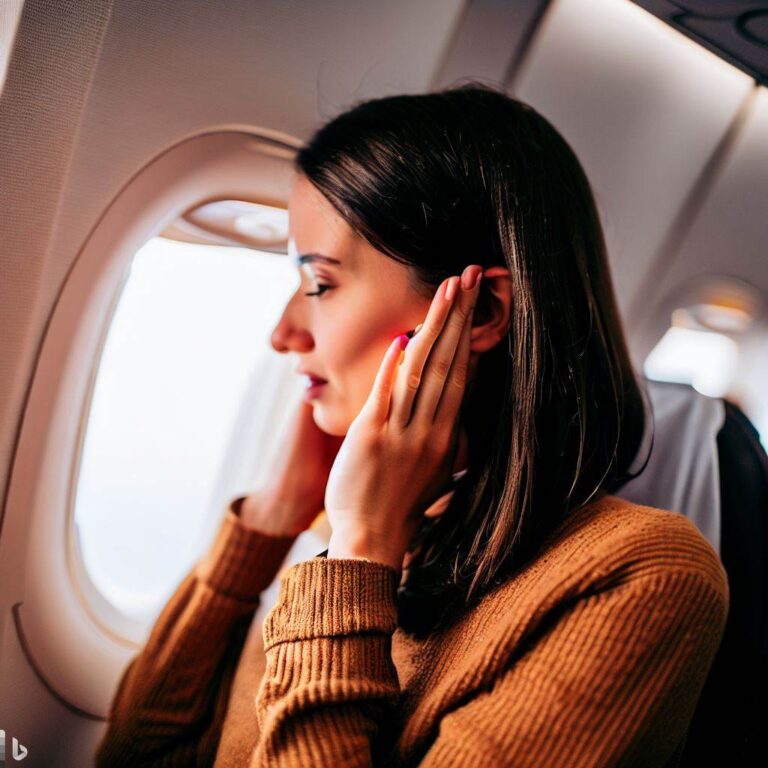Cruising provides an exciting opportunity to explore multiple destinations while enjoying the luxury of a floating hotel. However, for some travelers, the thought of getting seasick can put a damper on the anticipation of their voyage. Whether it’s your first-time cruiser or you’ve had a past experience with seasickness, there are practical tips that will help you ensure a smooth and enjoyable vacation. Here are seven essential tips on how to avoid getting seasick on a cruise.
Table of Contents
What is seasickness?
Your brain’s perception of movement is dependent on three sensory systems: vestibular (balance), visual (what your eyes can see), and somatosensory (feelings of touch sensation). When there is an interruption or conflict between these sensory systems, symptoms of motion sickness can manifest.
Sea sickness is a type of motion sickness that occurs when you are on a boat or ship that moves in different directions. It is caused by a conflict between what your eyes see and what your inner ear (vestibular system) senses. The inner ear helps you balance and orient yourself, but when it detects changes in acceleration or movement that you are not visualizing, your brain receives confusing signals. This disruption of your vestibular system can make you feel dizzy, nauseous, sweaty, or even vomit.
You can experience motion sickness in various modes of travel, including cars, planes, and even amusement park rides, but is especially common on cruises due to the continuous movement of the ship.
The Importance of Preventing Seasickness on a Cruise
While seasickness is by no means life-threatening, it can significantly affect your overall cruise experience. Symptoms like nausea, vomiting, and dizziness can prevent you from enjoying onboard activities, dining experiences, and shore excursions. Usually, pregnant women, children older than two years old, and those who have certain medical conditions such as migraines, generally have a higher risk of experiencing the effects of motion sickness.
The good news is, feelings of nausea can be prevented and managed despite the rough seas.
Tip #1: Choose the Right Cabin
Cabin location can affect seasickness because different parts of the ship experience different levels of motion. The motion of the ship can be felt more in certain places of a large cruise ship. Thus, choosing the right room during your stay can make a big difference to minimize the risk of seasickness.
Explanation of How Cabin Location Can Affect Seasickness
Ships move around three axes: they pitch (move up and down from bow to stern), they roll (rock side to side), and they yaw (sway left and right). The farther away from the center of these movements you are, the more motion you will feel. That’s why cabins located on higher decks and at the far front or back of the ship tend to feel more movement than those situated lower and more centrally.
Tips for Selecting the Best Cabin Room to Minimize Motion Sickness
If you’re prone to seasickness, opt for mid-ship cabins or low deck cabins, where you will feel less movement and sway. This is because the lower decks are closer to the waterline and the center of gravity, which means they experience less vertical movement (up and down) and less role (side to side). The front and back of the ship are more exposed to the waves and wind, so finding a room more central in the ship will lessen that pitch movement.
If lower levels are already booked or you’d prefer to be on a higher deck, try to choose a stateroom as close to the middle of the ship as possible. Avoid cabins near the front or back of the ship where the motion is typically more pronounced.
An outside cabin with a window or a balcony can also help reduce seasickness, as it can provide a view of the horizon and some fresh air. Seeing the horizon can help your brain orient itself and match what your eyes see with what your inner ear senses. Fresh air can also help you breathe better and calm your stomach
Tip #2: Avoid foods that worsen seasickness
What you consume before and during your cruise can have a significant impact on how well your body reacts to most movements. Certain drinks such as too much alcohol intake or caffeinated drinks can worsen dehydration, which can make you feel sick faster.
How Certain Foods and Drinks Can Influence Seasickness
Foods that are high in fat, overly spicy foods, or acidic can cause an upset stomach and make you more prone to seasickness. Usually, foods that are greasy and heavy can be harder to digest. Spicy and acidic foods can irritate your GI lining and worsen symptoms of motion sickness when your vestibular system is already interrupted.
Drinking too much alcohol or caffeinated drinks can increase the risk of dehydration, making you more susceptible to the effects of seasickness.
Generally, you want to eat a well-balanced meal on your cruise, but just don’t overeat foods that are harder to digest and foods that can exacerbate nausea.
Foods That Help With Seasickness Symptoms Such As Nausea
Foods that are easy on the stomach, like crackers, bread, green apples, or bananas, can help ward off nausea. Ginger and peppermint are also known for their natural ability to soothe the stomach and reduce nausea. You can add them to your diet in the form of ginger ale, ginger candy, tea, or essential oils. Stay hydrated by drinking plenty of water and limiting your alcohol and caffeine consumption. Therefore, it’s important to monitor your diet closely when you’re planning to go on a cruise.
Tip #3: Small Frequent Meals Throughout The Day
Nausea can be worsened if you have an empty stomach or if you overeat heavy, greasy food. The perfect medium is to space out small meals throughout your stay. Opt for lighter meals and snacks throughout the day to keep your stomach full without overdoing it.
Too much of greasy heavy foods can be difficult to digest. Most modern ships should have room and allow you to access several dining options or rooms, so “snacking” throughout the day is a little bit easier. Make sure you have a good balance of protein and cooked vegetables throughout your stay.
Tip #4: Stay Hydrated
Staying hydrated is key when it comes to avoiding seasickness. Dehydration can make you feel dizzy and lightheaded, which can compound the effect of the ship’s motion. Aim to drink plenty of water throughout the day, especially if you’re spending time in the sun or consuming alcoholic beverages.
Dehydration can worsen the symptoms of seasickness by causing lightheadedness and headaches. Carrying a refillable water bottle can help remind you to drink regularly and can help you maintain your fluid intake. Low acidity juices like apple or carrot, or clear soup can help as well. Do your best to avoid too much milk, coffee, or alcohol as these can dehydrate your more than rehydrate you.
Travelers’ diarrhea and vomiting can accelerate dehydration even more. Packing electrolyte packets or tablets when you are sick should help replenish lost electrolytes and prevent over-dehydration.
Tip #5: Consider Different Remedies For Sea Sickness
If you’re worried about seasickness, it’s a good idea to come prepared with some remedies. There are plenty of options available, from seasickness medications to natural solutions that can help alleviate symptoms.
Before taking any medication, always consult with your healthcare provider to see what is best for you to take. Each seasickness remedy has its own instructions for use. Over-the-counter and prescription medications should be taken according to the package or doctor’s instructions.
There are a number of over-the-counter medications you can consider that can help reduce the adverse reactions of motion sickness:
– Dimenhydrinate (sample brand names: Dramamine, TripTone)
– Meclizine (sample brand names: Antivert, Bonine)
– Diphenhydramine (sample brand name: Benadryl)
Prescription medication like scopolamine patches (Scopace, Transderm Scop) can also be a great option because they last for a couple of days, making them a good choice for longer cruises. However, these medications can have side effects like dry mouth and drowsiness, so it’s important to discuss them with your doctor before using them. They should be applied behind your ear at least 4 hours prior to your departure. The motion sickness patch can last for up to 72 hours after it has been applied. Promethazine (Phenadoz, Promethegan) is another prescription medication that can be used to prevent and treat motion sickness as well.
Natural remedies like ginger and peppermint have been shown to help reduce nausea and motion sickness. You can consume them in various forms, such as candies, teas, or essential oils. Natural remedies like ginger and peppermint can be consumed throughout the day, but it’s especially beneficial to have them before you start feeling sick.
Acupressure wristbands, which apply pressure to a specific point on your wrist, are also known to help prevent seasickness. Acupressure wristbands are designed to relieve nausea, motion sickness, and morning sickness. The P6 or Nei-Kuan pressure point on the wrist when suppressed, can help relieve nausea and vomiting. Sea-band wristband should be worn continuously once you board the ship.
If you’re looking for a more holistic approach, consider trying acupuncture, which is often offered at onboard spas on cruise ships.
Tip #6: Focus on the Horizon
Focusing your gaze on the horizon can help your body regain its sense of balance and alleviate the symptoms of seasickness. This technique helps align what your eyes see with what your inner ear senses, reducing the dissonance that causes motion sickness.
Explanation of Why Focusing on the Horizon Helps Prevent Seasickness
When your vestibular system senses the ship’s movement (due to the motion of the ship), but your brain receives visually that you are remaining stationary (ie, viewing the interior of a cabin on a ship), the vestibular and visual sensory cues are in conflict causing symptoms of motion sickness.
By focusing on the horizon, you’re giving your eyes a point of reference that matches the motion your inner ear is sensing, helping your body regain its equilibrium.
Tip #7: Get Some Fresh Air
Stepping outside and getting some fresh air may be the best place for alleviating seasickness. The cool breeze, open space, and ability to focus on the horizon all contribute to reducing nausea and dizziness associated with motion sickness.
How Fresh Air Can Help Alleviate Symptoms of Seasickness
Fresh air not only provides relief from the sometimes stuffy environment inside the ship, but it also offers a sensory distraction, taking your mind off the feeling of movement. Additionally, being on the open deck allows you to look far into the distance and focus on the stable horizon line, which can help your body readjust its sense of balance.
Conclusion
Seasickness doesn’t have to ruin your next cruise adventure. With these tips, you can better prepare yourself and take the necessary steps to avoid feeling ill during your journey. Remember, everyone is different, and what works for one person may not work for another. It may take some trial and error to find the remedy that works best for you. Whether it is your first cruise or 100th cruise, the key is to stay proactive, listen to your body, and take action at the first sign of discomfort.
With proper preparation and the right remedies at your disposal, you can tackle seasickness head-on and maximize your enjoyment on your cruise vacation. So go ahead, book that dream cruise, and set sail with confidence knowing that you’re well-equipped to have a smoother ride!
Recap of the Tips on How to Avoid Getting Seasick on a Cruise
To recap, here are the seven best ways to avoid seasickness on your cruise: choose the right cabin (middle of the ship or lower deck), adhere to small frequent meals, watch what you eat and drink, stay hydrated, use over-the-counter medication or natural remedies (acupressure bands, ginger candy), focus on the horizon, and get some fresh air. By following these suggestions and listening to your body, you can enjoy a pleasant and memorable cruise experience.







